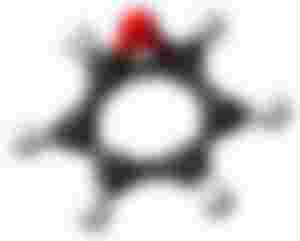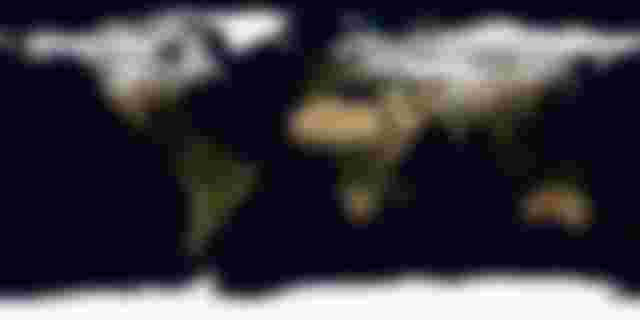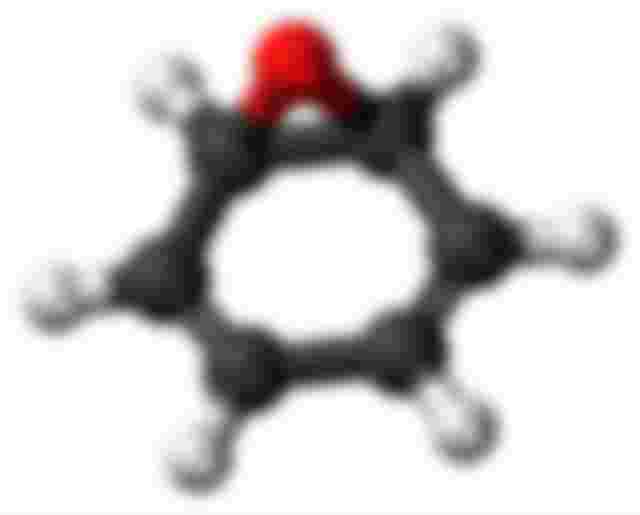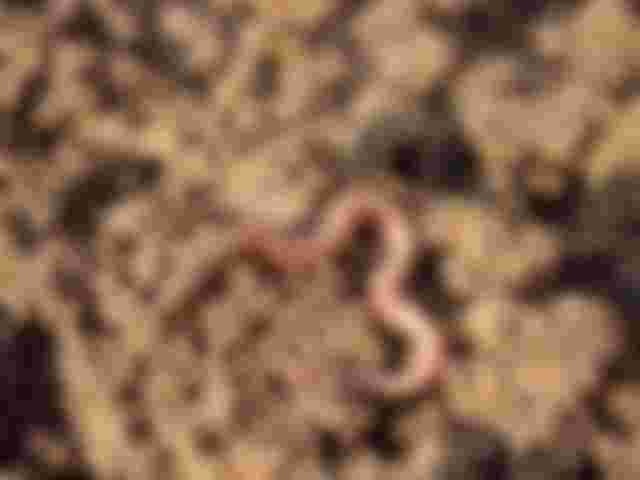With all the scientific progress, our knowledge of this world increases very quickly, today we have a lot of scientific knowledge as a matter of course, but in fact that knowledge is the results of centuries of interpretations and experiments carried out by ordinary people, doctors and scientists, but most of them are based in his scientific looks on the pain Beliefs and not scientific evidence, and those theories may make you laugh today, and may make you surprised, but those theories were once an integral part of people's lives.
Here is a list of 10 crazy and strange theories and beliefs that scientists once believed in...
1- The theory of miasma to explain the appearance of diseases

Before the emergence of the theory of bacterial disease, doctors and scientists believed for many centuries that the possible cause of diseases such as chlamydia, cholera and black death is miasma - meaning the polluted atmosphere.
According to this theory, these epidemics are caused by bad polluted air emitted from rotting organic matter.
In ancient times in Europe, this theory was widely accepted and spread in Europe, China, and Southeast Asia, where toxic steam or fog was thought to be filled with particles of decaying, rotting matter.
The theory of miasma was challenged by doctors such as Jon Snow and Filippo Bacheini, and that theory was definitively refuted in 1876, when Robert Koch proved that bacillus anthracis causes anthrax, thus the theory of the bacterial disease appeared and gained a foothold.
2. The theory of transcontinental bridges

At present, geologists around the world agree on the fact that the Earth's surface is not a single solid mass, but consists of many static and sliding plates above the earth's scarf layer known as tectonic plates.
But before this widespread acceptance of the tectonic plate theory, scientists believed that the continents were connected by land bridges now submerged underwater.
The theory of earth bridges emerged when geologists observed that some fossils and geological features of one continent corresponded to the characteristics of another continent, although both were separated by great oceans.
In addition, scientists found fossils of many similar terrestrial organisms and plants on two or more continents, and to explain these similarities, scientists at the time put forward the theory that there are bridges of the Earth that connected those continents together, but have now disappeared under the depths of the oceans.
3- Do not wash hands before and after patients are examined

Before the 1860s, doctors did not wash their hands before seeing patients, and if a doctor suggested washing hands before dealing with patients, he was ridiculed by his peers, in 1865, a Hungarian doctor named Ignaz Philipp Semmelweis was hospitalized because he suffered from a nervous breakdown. He suggested that doctors wash their hands after examining the patient.
In those times, the theory of bacterial disease was not widely accepted, and therefore, doctors did not wash their hands after performing an autopsy and even after examining a patient , bed linen and laboratory coats were not washed , but surgical instruments were cleaned only when before they were put for storage.
Also, at those times, it was understood that the noble man's hand was always clean, and since the doctors were noble masters, they refrained from washing their hands. So, when Semmelweis suggested that doctors should wash their hands, he was ridiculed, and after his death, germ theory emerged, and by 1875, doctors had to clear their hands and always sterilize the tools.
4-Mercury is a safe substance and is used as an antiseptic and laxative in the past.

We realize today that mercury is a highly toxic substance and a harmful environmental pollutant, but in ancient times ordinary people, as well as scientists and doctors, used "liquid silver" on a large scale where they thought it was a super-substance that eliminated most diseases.
The popularity of mercury increased in those times because in 210 BC the Chinese emperor Qin Shi Huang di wanted to become immortal, so he took a dose or pills containing mercury by a scientist in his palace, but that dose eventually led to his death.
In the 16th century, mercury was widely used in medicine, and over the next four centuries, mercury compounds were a key ingredient in medicines in all Asian and European pharmacies, where mercury was thought to treat constipation, and some intractable diseases such as syphilis, as can be It was used as a disinfectant, and as a result a large number of people died of mercury poisoning, even in the 1990s mercury was used as a spermicide, and is still used in dental and cosmetic clinics, saline solutions, and eye drops.
5- The person will suffocate if he travels at more than 30 miles per hour due to the air.

Before the invention of the railroad, people had very negative and very funny thoughts about anything moving at speeds greater than 30 miles per hour, and it was thought that the train journey could be brain-damaging. Father.
6. The theory of the existence of the flogisto

100 years before the discovery of oxygen and its role in combustion, scientists suggested the theory of flogisto - an element like fire, released during the process of burning fuel, the substances burned in the air must contain the material of flogiston, as it was believed that the process of breathing contributes to the exit of the fallujah Sixty of the body, that theory was used to understand processes such as combustion and rust.
Until the 1870s, the theory of flugiston was the most widely accepted theory, until oxygen was discovered in 1771.
7- There is no empty space in the universe, and light is transmitted by ether material.

According to medieval science, all the area above and around the globe was thought to be filled with a substance called "ether", also known as "essence", and was considered a fifth element along with the elements of the earth, wind, fire and water.
It was believed that the material filled the universe and acted as a medium for the spread of light through space.
In the 19th century, many physicists conducted many experiments but were unable to find any physical evidence to trace the presence of ether, so that theory ended completely after the publication of Einstein's "theory of relativity", where relativity solved many theoretical issues related to ether, and Since then, ether has been considered a substance that does not exist.
8- Use gasoline after shaving and to wash hands for its good smell.

In the 19th and early 20th centuries, scientists did not know that gasoline is a carcinogen, which is why it was widely used, where gasoline was used as an aftershave wash, and in 1903 gasoline became common in industries where it was used to remove caffeine from coffee Before 1920, it was used as an industrial solvent.
Historically - gasoline was an important component of many consumer products such as rubber cement, paint removers, and stain removers, even it was used by chemists to wash their hands, but when the toxicity of gasoline became apparent, people stopped using it slowly.
9. Theory of self-breeding or automatic reproduction

For centuries, scientists have believed that non-living objects can lead to the emergence of living organisms through "self-breeding" - this strange theory emerged as a result of people, farmers and scientists observing that empty barns are filled with mice and rats only when grains are stored in them, so they thought the jars Mice are born of grains, and of course this belief led to the conclusion that rotten meat creates worms and flies, as muddy soil leads to the emergence of frogs, beetles, worms and others.
This theory spread strongly until the 18th century, but then scientists came to the fact that living organisms cannot be produced by non-living objects, and the end of that theory came later in the 19th century, when Louis Pasteur discovered that microorganisms such as bacteria could They exist on non-living things and multiply.
10-Radiation is good for human health.

It's hard to believe that at one time scientists thought that radiation was good for humans, but this was already popular in the early 20th century, and as a result of this mistaken belief, there were many famous radioactive products that were marketed as beneficial to health, even in the treatment of diseases such as Arthritis and rheumatism, these types are relieved between eating radioactive water, and cleaning teeth using radioactive toothpaste, which is believed to make your teeth shine and sparkle, but it has come to lie down on the rich sand of uranium to soothe chronic pains and pains.
These beliefs continued until the 1950s, and one of the bold supporters of radiation safety was Polish physicist and chemist Marie Curie, a Nobel Laureate, who refused to believe the dangers of radiation, although she suffered from many chronic diseases that Caused by radiation, including near blindness caused by cataracts, due to the long years that Corrie was dealing with radiation, to the point where test tubes are stored anywhere around her, in her coat pocket or the desk drawer again, even in her cookbook, and those tubes contained High levels of radiation are very dangerous and can only be stored in bullet-lined boxes.










[Removed comment]